20 Questions with Wizards of the Coast’s D&D Development Team
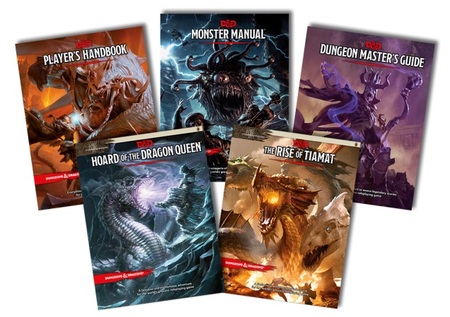 |
| Old Men Rolling Dice |
This year marks the 40th Anniversary of the Dungeons & Dragons role playing game. It also marks the release of the fifth and newest edition of the game. Well…fifth edition if you think “3rd Edition” was actually the “third edition.”
After asking the keepers of secrets that are Wizards of the Coast’s PR department, I was recently able to send in 20 questions to be answered by the D&D Research & Development team regarding the new edition. The questions cover a lot of territory, some old and some new. Given the indirect means of communication, I am uncertain whether the answers are direct from Mike Mearls or if they are team answers that have been redacted for security reasons. Whatever the case may be, many Bothans died to deliver these answers to you.
1. This Time Around the Squeaky Wheel Doesn’t Get the Rules Change.
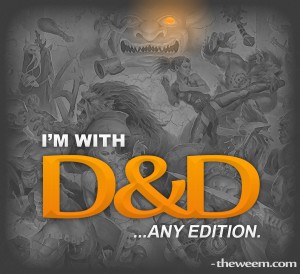 |
| The Weem |
When you were designing fifth edition you opted for a public playtest for a large part of the development cycle. What prompted this decision?
“We felt that the overall feedback cycle on the game had been broken. There are people on forums and social media who talk to us, but we suspected that they didn’t represent the overall preferences of D&D players as a whole. The playtest was aimed at broadening the audience we communicated with and using that dialogue to direct our work.”
2. Balance Is Boring.
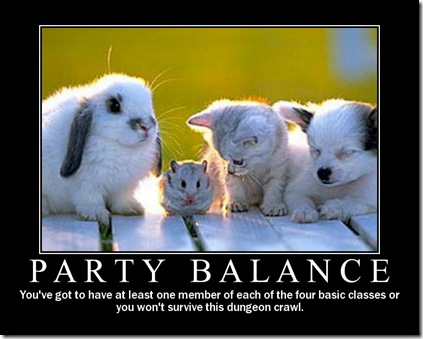 |
| (De)Motivationalist |
What were some of the main design goals for fifth edition with regard to game balance?
“Game balance is tricky because if you focus too much on it you can end up with a game that’s balanced by boring. Our main focus was on making a game where every class felt fun and no one overshadowed anyone else in all areas. Some classes are good at defense, others at offense; while others have lots of tricks up their sleeves. We broke the game down into three basic areas: exploration, combat, and interaction and used that as a guide. Each class had to be useful in each area in some way, but how they were useful had to vary.”
3. The Walking Dead or How I Learned to Love the TPK.
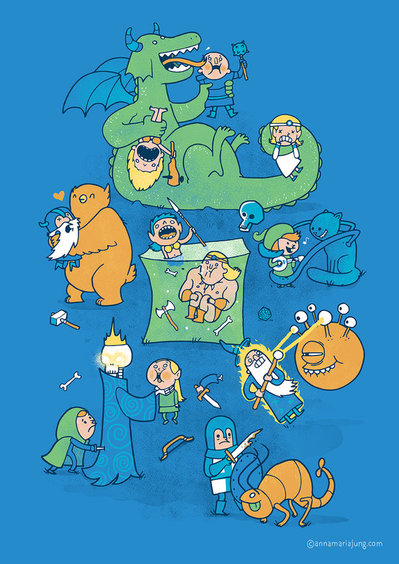 |
| Miss Queen Mob |
Compared to 4th edition, gameplay seems more likely to result in a “TPK” (Total Party Kill) than prior editions. I’ve already noticed that the “rat swarm” encounter in Hoard has claimed a number of victims. Was this intentional?
“Very much so. Tension and danger make D&D fun and if you look at stuff like The Walking Dead and Game of Thrones, people have a much bigger appetite for that sort of uncertainty and danger these days. Killing off a character shows the group that they need to truly earn their victories. It also plays to the strengths of tabletop RPGs. A DM can always change the campaign to account for character death. A video game can only dump you back to your last save point.”
4. Keeping it as Simple as a 1040EZ and Keeping Kobolds Scary at 20th Level.
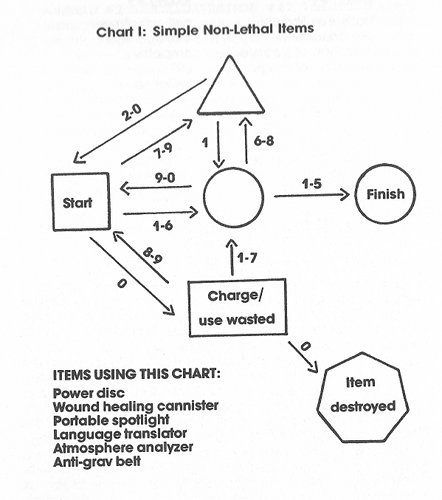 |
| Dungeons and Digressions |
Can you describe the shift to the “Proficiency Bonus” as the primary mechanic driving character improvement?
“It’s part of our overall move to make the game simpler. It represents your character’s overall skill in things like fighting, hiding, and spotting traps. These are all things that your character might specialize in. You either receive your proficiency bonus to a check, or you do not.
For new players, that makes things much easier than sorting through a character sheet that looks like a tax form. It also provides the DM with a simple on switch to apply during the game. Does a character’s training or skills apply in this situation? If so, the player adds the proficiency bonus.
In the bigger picture, the bonus simplifies the math while still giving players a sense of improvement. Since the proficiency bonus increases at a slow rate, a DM can use the same guidelines for determining Difficulty Classes at all levels. It also means that less skilled monsters still pose a threat against powerful characters because the difference in their attacks and defenses remains manageable.”
5. Keeping Feats Rare Makes Them Special and Noobs Don’t Read Talent Trees.
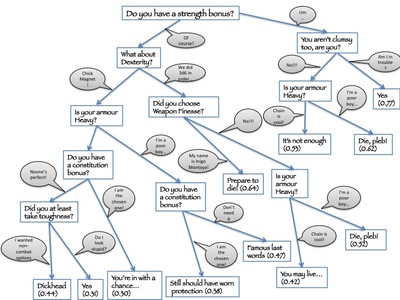 |
| Compromise and Conceit |
| What Feats Used to Be. |
Can you describe the approach that the design team took with Feats this time around?
“We decided to make feats optional. As your character gains levels, you can decide at certain points to increase your ability scores or take a feat. A feat is a special ability, like mastery of the longbow or training in a limited number of spells that makes your character unique.
Some players love the idea of picking out special abilities and really customizing their characters. Others like to lean solely on what a character class offers. By making feats optional, we allowed players to find their own level of customization and detail, rather than forcing one level on everyone.”
6. New Bards Are Awesome. Why Would Anyone Play a Fighter? Because…Feats…Yeah, That’s the Ticket.
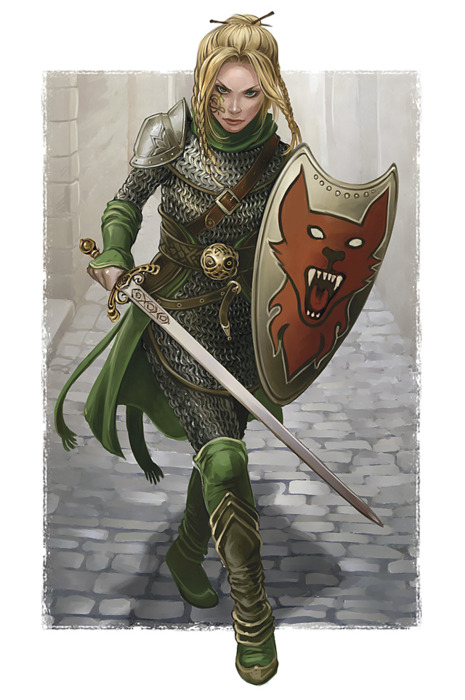 |
| Women Fighters in Reasonable Armor |
The Fighter class has the most “statistic increase” opportunities. Was it your intention that the Fighter class be the most likely class to take Feats?
“Very much so. We felt that this captured the idea of the fighter as one of the most flexible classes in the game. Some people see a fighter as a mighty weapon master. Others want to play a tough character that protects the rest of the party, a dashing swashbuckler, or a deadly archer. The fighter class allows for those archetypes in broad strokes, while feats give players who want more detail, the opportunity to really focus on one type of weapon or fighting style.”
7. Spell Slots: Everything You Hate About Vancian Magic Plus Everything You Hate About Spell Points, But Awesome.
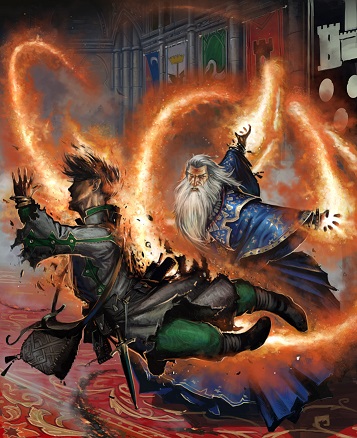 |
| Dungeons and Caverns |
Can you explain some of the choices you made with regard to the magic system, in particular the interesting changes in the use of Spell slots?
“We know that some gamers never liked D&D‘s magic system, and the playtest showed that they disliked the feeling of rigidity in the system. We’ve made things much more flexible now. In the past, you picked a spell you wanted to cast and once you used it, it was gone.
Now, you pick your spells and instead expend magical energy to power the spell. These units of energy are called spell slots. You can choose which of your spells to cast and how often. You can also put more energy into a spell by casting it with a more powerful slot, creating a mightier effect.
In essence, rather than expending spells you spend your energy. The spells you can cast remain the same, provided that you have not run so low on slots that you lack the minimum needed to cast your more powerful options. It’s a minor change, but one that has gone over very well.”
8. Wizards’ Design Team is Cool Because FATE and OSR. No, We Won’t Mention the Sessions of Kill Puppies for Satan.
 |
| Fate RPG Website |
What are some of the non-D&D games that influence the design innovations in this edition of D&D?
“I like to think of it in terms of RPG philosophies rather than specific games. Indie games, and more story-oriented RPGs like the FATE system, influenced the game’s increased emphasis on storytelling and roleplaying. The inspiration system, which rewards players for creating and acting out distinct personalities for their characters, came straight from that approach to design.
The old school renaissance in gaming, a return to the simpler, speedier game designs that gave players and DMs more creative freedom definitely influenced many of our overall design decisions.
Finally, the emphasis on the experience at the table, the intersection between the player, the game rules, and the gaming group, is based on a lot of the game design thinking behind board and video games these days.”
9. Developers Were Introduced to D&D from Old Enough to Be Cool, But Not Old Enough to Be Old Edition.
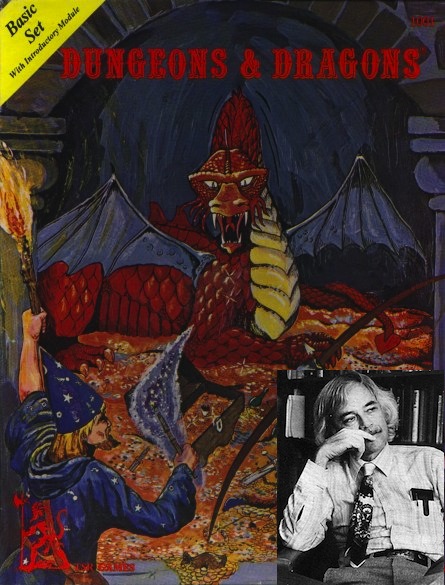 |
| Zenopus Archives |
What version of D&D did you first play and how did that particular edition influence design choices?
“I first played the 1978 Basic Set, and its simple, streamlined rules and emphasis on elements of fantasy I was already familiar with was a huge influence. That set allowed me to focus on what made roleplaying and D&D unique. I already knew what giants, dragons, and goblins were. The game was simple enough that I could start playing, but left enough blank areas that it galvanized my creativity.”
10. It’s All About Marketing Synergy.
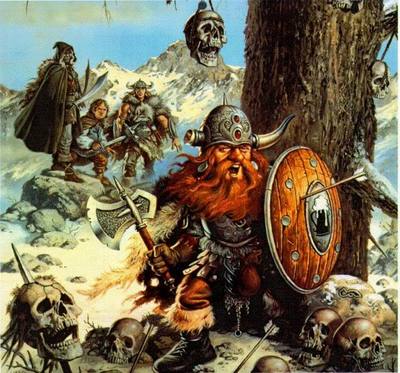 |
| Mik’s Minis |
Prior editions of D&D often described character classes by referring to classic fantasy and sword and sorcery stories. This edition often references books published by Wizards of the Coast, like the use of Bruenor, was this an intentional choice and why?
“Very much intentional. We know that many D&D gamers read our novel line, and we felt that since these are our characters, we should feature them. It’s been a nice call out to the classic stories that have shaped settings like the Forgotten Realms, Dragonlance, and others.”
11. What Do You Mean Ed Greenwood Isn’t in the Updated Appendix N? AKA, Weren’t We Just Discussing Synergy?
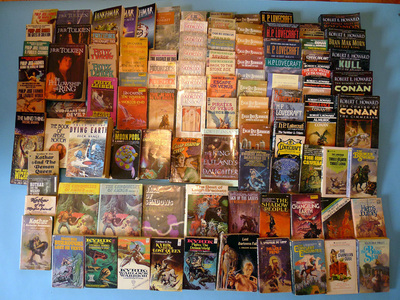 |
| Goodman Games |
| Most of the Books of Appendix N |
In the back of the Player’s Handbook there is an updated version of Appendix N. It includes a couple of Wizards authors (Dragonlance and Drizzt series are mentioned), but many other Wizards publications were left out. There has been some discussion about the exclusion of Ed Greenwood in the Forgotten Realms community. Understanding that this list was meant to be more than a “here are other Wizards books you can buy list,” could you describe the reasoning behind the books that were selected?
“It was basically a distillation of the original list from AD&D with books added by the team based on what we were reading at the time. I literally sent an email to the team and asked people to name some of their favorite novels from the past year. In Ed’s case, that’s just a simple oversight.”
12. The First Taste Is Always Free.
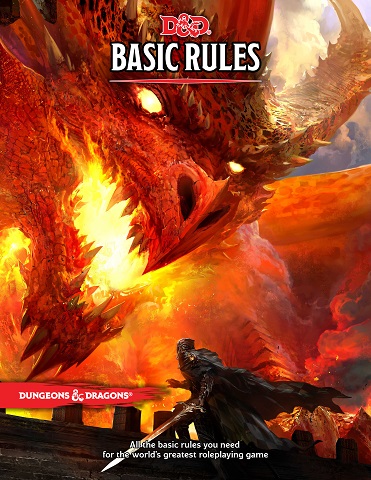 |
| EN World |
The decision was made to make the Basic Rules available for free online, and a similar choice has been made with the DungeonScape application, can you discuss the decision to make D&D a tabletop “freemium” game?
“Much of it comes down to how games work these days. There are so many options available that asking someone to put down money before they can even try your game is a fairly outdated approach. Even board games make their rulebooks available for free online, giving you a chance to try before you buy. It’s about staying contemporary and making the game as accessible as possible.”
13. No We Are Not Talking About Ludacris. We Are Talking “Products of Your Imagination!”
The most recent design seems very ambitious in its attempt to appeal to both “Theater of the Mind” gamers as well as tactical miniatures gamers. Can you discuss how you tried to navigate this very difficult design challenge?
“It came down to finding the right balance between clarity and flexibility. For instance, we stuck to measuring distances in 5-foot increments because it turned out to help both playing with miniatures and without them.
When you use miniatures, it’s easy to mark each square on a tactical map as measuring 5-feet across. Without miniatures, 5 feet becomes the minimum distance that a DM should worry about. Measuring distances in finer detail slows down the game.
Since we drew a lot on D&D‘s history, we found a lot of areas where the game naturally settled into details where millions of hours of play ended up distilled into the game rules from prior editions for us to draw upon.”
14. We’re #1!
We did it! The Player's Handbook has hit #1 overall at Amazon. HUGE thanks to all the players and DMs out there. pic.twitter.com/K16BICVNEO
— Mike Mearls (@mikemearls) August 19, 2014
Fifth edition recently reached #1 on Amazon. Do you have a sense of the overall sales direction for the edition? How does it compare to the release of 4th edition?
“Things are going very well for us. It’s hard to draw a direct comparison, because 4e launched with all three core rulebooks at once, but so far we are seeing strong sales in all channels. We’ve moved ahead with multiple reprints and in terms of raw numbers, we are ahead of prior launches. However, the health of an edition can never be determined by its first few months of sales. We’re in it for the long haul for fifth edition. It’s like we hit our goals for year one, so let’s now focus on making years two and beyond successes.”
15. Someone on The Internet Is Always Wrong, Especially on Gaming Forums.
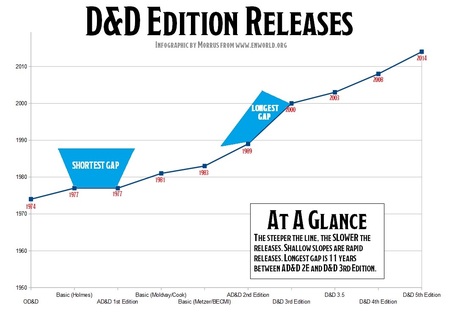 |
| EN World |
Gamers can be opinionated, and each edition seems to create another segmentation in the community; what were some of the approaches your design team took to make this an edition that could appeal to multiple “fractures” in the D&D community?
“The biggest insight we had from the playtest was that those fractures largely arise out of online communities. The greater body of D&D fans wanted very similar things, like fast-moving, intuitive rules, an emphasis on roleplaying and storytelling, and flexible character creation. The playtest was a huge bonus in that regard, because otherwise we might have been caught up in thinking we had a splintered fan base.”
16. Hey Noob! You Can Have More Fun If You Move Beyond the Starter Set!
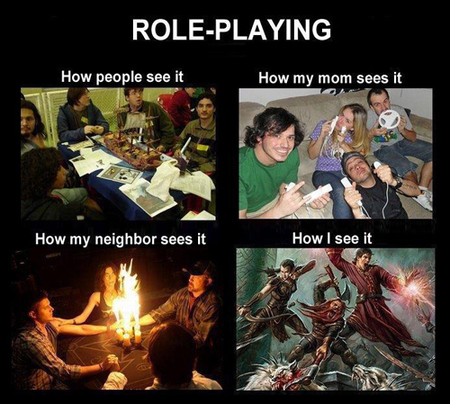 |
| Ask the DM |
One of the big concerns I have for the hobby is that it often has a steep learning curve that makes it difficult to bring in new players. What is fifth edition doing to bring in new customers?
“The free Basic D&D is a big step in that direction, as is the emphasis on the adventure in the Starter Set. The Starter Set’s adventure has enough material to last for 20 to 30 hours of gaming, but it lacks character creation.
While experienced players might howl at that choice, we see many new groups diving into the Starter Set and launching campaigns. In the past, we had serious issues with migrating new users from the starter product to the core rulebooks. Its way too early to say whether we’ve succeeded in overcoming that, but the ease of entry with the new set seems to be working.”
17. How to Co-opt Former Employees Without Rehiring Them.
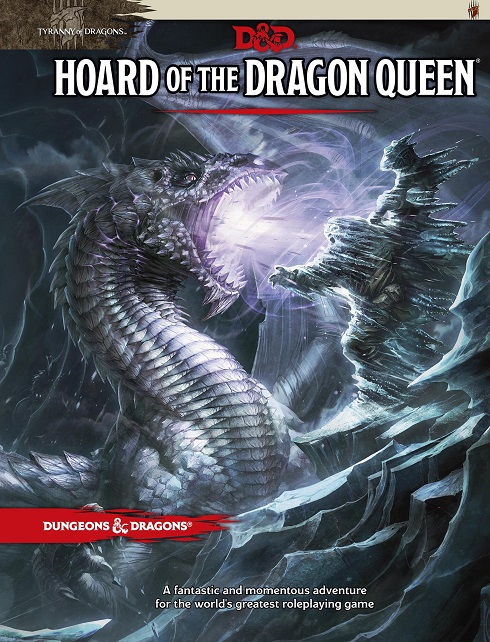 |
| Kobold Press |
Looking at many of the products coming down the pipeline, it appears that Wizards is working with more partners than in recent editions. We have Sasquatch Studios and Kobold Press designing official products. Can we expect to see more of this? Can you discuss why Wizards is taking this approach?
“We really want to focus on our strengths with this edition. The R&D team at Wizards of the Coast can handle big playtests, number crunching, and market research. We can also organize the lore on worlds like the Forgotten Realms and Greyhawk, and work with writers to make sure their material fits into canon.
With outside design studios, we can cherry pick the best writers out there and set them on projects that match their strengths. We no longer have to try to be good at everything. We can instead be good at our specialties, and focus on developing talented partners to step in and do what they do best.”
18. Wait! You Renewed Your D&D Insider Subscription in April? Bwahaha! Snort.
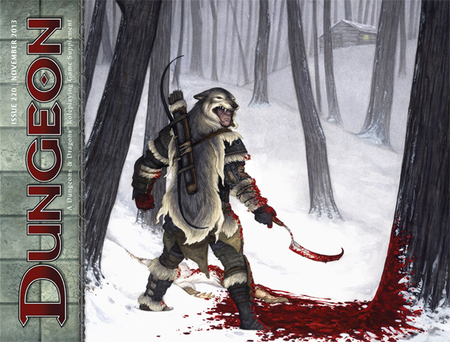 |
| Wizards of the Coast |
Back in April, I renewed my D&D Insider subscription. While I am happy to have access to the online tools, will there be continued support for 4e players and for the D&D Insider online tools?
“We plan on continuing the D&D Insider tools for as long as people subscribe to them. While we don’t have plans for new content, subscribers maintain access to years of Dragon and Dungeon magazine content plus the materials we added to the tools over the run of 4th edition.”
19. It Took Almost 20 Years, But Wizards Now Realizes Evergreen Products Are Nice.
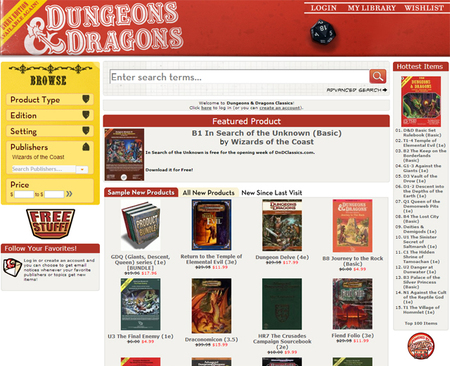 |
| D & D Classics |
Wizards of the Coast recently resumed selling products from older editions on DriveThruRPG/RPGNow. How well have these products been selling and is Wizards planning to continue expanding its digital offerings?
“We’re quite happy with our PDF sales and the fact that fans of all D&D settings can keep their libraries stocked with classic titles. We definitely have big plans for digital offerings, especially through the Dungeonscape tool from Trapdoor Technologies.”
20. Didn’t You Hear? Paper is Dead.
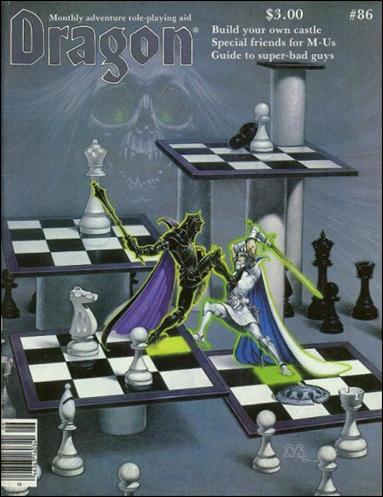 |
| Comic Collector Archive |
I know that this is unlikely, but are there any plans to relaunch the old Dungeon and Dragon Magazines in print format?
“Print format for magazines is very tricky. While Paizo Publishing did a great job with the magazines’ content, at the end of the day subscriptions dropped year after year during their tenure. That was merely a continuation of the trend from Wizards of the Coast’s last years of printing them. Things were tough enough in the periodicals market that Wizards actually agreed to forgo Paizo’s royalties to keep the magazines going. When you have a company of gaming experts doing nothing but trying to make a print magazine work, and they’re having trouble, I think you’re looking at a challenge that might not have a simple solution.
These days, the magazine market is even worse. Now, with that in mind we know that Dragon and Dungeon occupy a special place in the culture of D&D. We have many ideas on what we can do with them, but nothing to talk about yet.”
The interview contained some very good news for fans of the new edition, as well as good news for fans of older editions. There were a couple of things that stood out to me as disappointing in the conversation, but I want to know your thoughts.
What did you like about these answers and what did you find disappointing?
Do you have any other questions about the new edition?
What are your thoughts on the new edition of the game?
Previously by Christian Lindke:
10 Geek Holidays and How to Celebrate Them
7 Reasons I, Frankenstein Is Like the Greatest RPG Campaign Ever GM’d
The 10 Best Superhero Role-Playing Games
From The Adventures of Rocky and Bullwinkle to Dallas: 10 Strange Licensed RPGs
Ten Ways to Make a Dungeons & Dragons Movie Not Suck
Related Posts
-
Pikachu, I Choose OH GOD MY EYES
And with this bit o' nightmare fuel from the brilliance of
by Rob Bricken -
8 Things I Learned While Surviving Space Camp
If you were a child of the '80s and early '90s,
by Charles Webb
About The Author
Christian Lindke
In between studying for a Ph.D. in Political Science at the University of California, Riverside and being a non-profit Program Director, Christian Lindke spends his time experiencing as much of pop culture as possible and playing role playing games. He hosts the Advanced Dungeons and Parenting Blog and holds an M.B.A. in Marketing.
